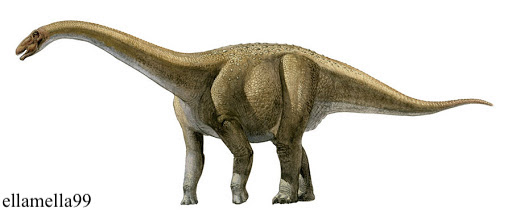Welcome to Aeolosaurus

Name Definition
Aeolus lizard
Name Given By
A. rionegrinus/Powell, 1987 ; A. colhuehuapensis/Casal et al., 2007 ; A. maximus/Santucci & De Arruba-Campos, 2011
Location
Angostura Colorada Formation (A. rionegrinus), Allen Formation (unnamed species),and Lago Colhue Huapi Formation (A. colhuehuapensis)of Argentina, as well as A. maximus which was found in the Adamantina Formation of Brazil
Classification
Dinosauria, Saurischia, Sauropodomorpha, Sauropoda, Eusauropoda, Neosauropoda, Macronaria, Titanosauria, Lithostrotia, Aeolosaurini
Size
estimates around 4 meters tall, 14 meters long, 2020 estimates suggest around 14.7 tons
Temporal Range
Maastrichtian stage of the late Cretaceous epoch, 72 - 66 million years ago
Ecological niche
large herbivore with osteoderms as protection
Species/Sub Species
A. rionegrinus (type species), A. colhuehuapensis, A. maximus, unnamed Aeolosaurus species found in the Allen Formation
Diet
Aeolosaurus was probably fed on tree leaves due to its height which also helped it avoid competition from other herbivores for most of the time
Introduction
Aeolosaurus is a genus of extinct titanosaurian sauropods that lived in Argentina during the late Cretaceous. Aeolosaurus is named after the mythical figure Aeolus who was given the nickname “keeper of the winds” in Odyssey written by Homer. The reason for this is because at the location where Aeolosaurus was found, there were many winds that blew over Patagonia there. The type species A. rionegrinus is named after the Rio Negro Province in Argentina. A. colhuehuapensis was named after the Lago Colhue Huapi Formation which it was found in. The last and final species, A. maximus, is named because it is the largest Aeolosaurus species. There was also an unnamed species of Aeolosaurus that was found in the Allen Formation. Aeolosaurus is closely related to the titanosaurian genus Gondwanatitan. This is because Gondwanatitan was once recognized as a species of Aeolosaurus, A. fautoi, which just shows how similar they are. Both of the sauropods have relatively longer caudal vertebrae and have neural spines that are angled to the anterior (front) of the animal. Because of this special vertebrae build, it has been suggested that they might have provided better support for when Aeolosaurus was standing up and was rearing up on its hind limbs which would allow Aeolosaurus to access even more vegetation. Some other remains of Aeolosaurus show that its skin had osteoderms which were basically protective bony lumps that grew in the skin. Some other titanosaurs like Saltasaurus have also been known to have these osteoderms in their skin which is thought to have been additional protection from predators like abelisaurids. All the different species of Aeolosaurus lived in different formations, though they would have contained typical Late Cretaceous Argentinian fauna.